16-1. It seems that according to the G text
Antares - the Polynesian Entrance Pillar - should be
depicted as a Shark when the Sun was turning around at
the SEPTEMBER EQUINOX:
Magó. Spotted dogfish, small shark. Vanaga. Mogo,
shark. P Pau.: mago, id. Mgv. mago, id. Mq.
mano, mako, mono, moko id. T. maó, id. In addition to
this list the word is found as mago in Samoa, Maori, Niuē,
and in Viti as mego.
It is only in Rapanui and the Marquesas that we encounter the
variant mogo.
Churchill.


... Maui at
first assumed the form of a kiore, or rat, to enter the
body of Hine. But tataeko, the little whitehead,
said he would never succeed in that form. So he took the form of
a toke, or earth-worm. But tiwaiwaka the fantail,
who did not like worms, was against this. So Maui turned
himself into a moko huruhuru, a kind of caterpillar that
glistens. It was agreed that this looked best, and so Maui
started forth, with comical movements.The little birds now did
their best to comply with Maui's wish. They sat as still
as they could, and held their beaks shut tight, and tried not to
laugh. But it was impossible. It was the way Maui went in
that gave them the giggles, and in a moment little tiwaiwaka
the fantail could no longer contain himself. He laughed out
loud, with his merry, cheeky note, and danced about with
delight, his tail flickering and his beak snapping. Hine nui
awoke with a start. She realised what was happening, and in a
moment it was all over with Maui. By the way of rebirth
he met his end ...
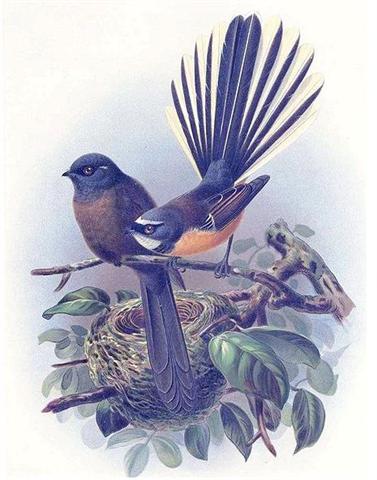
 |
 |
 |
 |
| Ga7-11
(180 → 500 - 320) |
Ga7-12 |
Ga7-13 |
Ga7-14 (183 → 177 + 6) |
|
SEPT 17 (260) |
18 |
19 |
20 (*183) |
|
MARCH 19 (78) |
20 (*364) |
21 |
22 (*366) |
|
BEID (Egg) =
ο¹
Eridani
(62.2),
μ
Persei (62.8)
VINDEMIATRIX ( ε Virginis) |
Al Dabarān-2 (The
Follower)
HYADUM I =
γ
Tauri (63.4)
*22.0 = *63.4 -
*41.4 |
HYADUM II = δ¹ Tauri
(64.2) |
Net-19 (Crow)
AIN (Eye) =
ε
Tauri,
θ¹
Tauri,
θ²
Tauri (65.7) |
|
May 22 |
23 |
24 (144 = 80 + 64) |
25 |
 |
 |
 |
 |
|
Ga7-15 (184) |
Ga7-16 |
Ga7-17 |
Ga7-18 |
|
SEPT 21 (*184) |
EQUINOX |
23 (266 = 330 - 64) |
24 |
|
ρ
Ophiuchi (248.1),
KAJAM (Club) =
ω
Herculis
(248.3),
χ
Ophiuchi (248.5),
SHE LOW (Market Tower) =
υ
Ophiuchi,
Tr.
Austr. (248.7), ζ Tr. Austr. (248.8) |
Al Kalb-16 (The Heart)
/
Jyeshtha-18 (Eldest)
/
ANA-MUA-1 (Entrance pillar)
ANTARES = α Scorpii
(249.1),
MARFIK (Elbow) = λ Ophiuchi,
φ Ophiuchi (249.5), ω Ophiuchi (249.8) |
γ Apodis (250.1), σ Herculis (250.3), θ Tr. Austr.
(250.6), τ Scorpii (250.7) |
HAN = ζ Ophiuchi (251.0) |
In the Golden Age of the Bull the Sun would have risen with
Antares at the northern autumn equinox. Nowadays (in my suggested era for
rongorongo) we have to add 64 precessional day positions in
order to find
heliacal Antares (*249), and SEPTEMBER 22 (*185) + *64 = *249 (329, November
25).
In the E text we could therefore try to count (hia) to heliacal Antares 329
- 266 = 63 days (glyphs) beyond the Long Sand-bank (*186)
at Eb5-21 (496 = 559 - 63). Significantly 5 * 59 =
295 (10 lunar synodic months).
... From the natives of South Island [of New
Zealand] White [John] heard a quaint myth which concerns the
calendar and its bearing on the sweet potato crop.
Whare-patari, who is credited with introducing the year of
twelve months into New Zealand, had a staff with twelve notches
on it. He went on a visit to some people called Rua-roa
(Long pit) who were famous round about for their extensive
knowledge. They inquired of Whare how many months the
year had according to his reckoning. He showed them the staff
with its twelve notches, one for each month. They replied: 'We
are in error since we have but ten months. Are we wrong in
lifting our crop of kumara (sweet potato) in the eighth
month?' Whare-patari answered: 'You are wrong. Leave them
until the tenth month ...
 |
 |
 |
|
Eb5-18 |
Eb5-19 (168) |
Eb5-20 |
|
te
tagata - e vai |
mama mamae
hia |
te henua -
Te kiore |
|
Mamae. Illness,
pain, to be ill or in
pain, afflicted;
tagata mamae,
the sick. Vanaga. Sick,
suffering, weak, ill;
mate maia mamae, to
depress; mata mamae,
drowsy, sleepy; mamae
kopu, bellyache;
mamae keo, headache;
mamae toto,
menses; ariga mamae,
to look ill;
hakamamae, to make
ill. T Mgv.: mamae,
to be ill, in pain,
suffering, sorrow. Mq.:
mamae, memae,
suffering, pain, grief.
Ta.: mamae, pain.
Churchill.
Kiore. Rat.
Vanaga. Rat, mouse;
kiore hiva, rabbit.
P Pau., Mgv.: kiore,
rat, mouse. Mq.: kioē,
íoé,
id. Ta.: iore,
id. Churchill.
 |
|
ALCHITA =
α
Corvi, MA WEI (Tail of
the Horse) =
δ
Centauri
(183.1),
MINKAR =
ε
Corvi
(183.7),
ρ
Centauri (183.9) |
PÁLIDA (Pale) =
δ
Crucis
(184.6),
MEGREZ (Root of the
Tail) =
δ
Ursae Majoris
(184.9) |
Hasta-13 (Hand)
/
Chariot-28 (Worm)
GIENAH (Wing) =
γ
Corvi
(185.1),
ε
Muscae (185.2),
ζ
Crucis (185.4), ZANIAH
(Corner) =
η
Virginis
(185.9)
*144.0 = *185.4 - *41.4 |
 |
|
Sept 20 |
21 (364 - 100 = 180 +
184 = 260 + 4) |
Equinox (265) |
|
"Aug 10 |
11 |
12 (224 = 265 - 41) |
|
JULY 18 |
19 (200) |
20 (224 - 23 = 201 = 265
- 64) |
|
...
The Corner of the House was
in the day before the
Creation of Our Present World -
which evidently had been recreated
in "August 13 (225). i.e. in the
year 70 * 41 - 1842 AD = 1028 BC.
And this would have been 23 * 70 =
1610 (→
JUNE 10) years after the preceding
similar such recreation in the Golden Age of
the Bull.
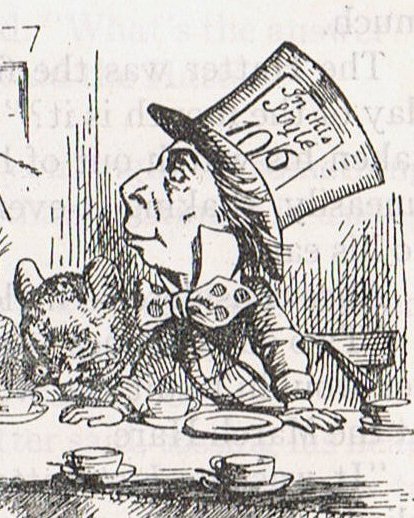 |
|
THE SUN: |
|
March 22 |
23 |
24 (*3) |
|
Uttara Bhādrapadā-27
(2nd of the Blessed
Feet)
/
Wall-14 (Porcupine)
ο Oct. (1.3),
ALGENIB PEGASI = γ
Pegasi
(1.8) |
χ Pegasi (2.1), θ
Andromedae (2.7) |
σ Andromedae (3.0),
ι
Ceti (3.3), ζ Tucanae
(3.5), ρ Andromedae, π
Tucanae (3.7) |
 |
|
... The ancient names of the month
were: Tua haro, Tehetu'upú, Tarahao, Vaitu nui,
Vaitu poru, He Maro, He
Anakena, Hora iti, Hora nui, Tagaroa uri, Ko Ruti,
Ko Koró .... |
He Maro 1 |
 |
 |
 |
 |
|
Eb5-21
(326 + 170 = 496) |
Eb5-22 |
Eb5-23 |
Eb5-24 (173) |
|
ihe romi hia |
e moa ure tupu hia |
hetu ki te ragi |
te kiore - te henua |
|
THE SUN: |
|
Julian equinox (*4) |
March 26 (267 -
182 = 85) |
27 |
28 (*372) |
|
... When Julius
Caesar established his calendar in 45 BC he set
March 25 as the spring
equinox. Since a Julian year (365.25 days) is
slightly longer than an actual year the calendar
drifted with respect to the equinox, such that the
equinox was occurring on about
21 March
in AD 300 and by AD 1500 it had reached 11 March.
This drift induced Pope Gregory XIII to create a
modern Gregorian calendar. The Pope wanted to
restore the edicts concerning the date of Easter of
the Council of Nicaea of
AD 325.
(Incidentally, the date of Easter itself is fixed by
an approximation of lunar cycles used in the Hebraic
calendar, but according to the historian Bede the
English name 'Easter' comes from a pagan celebration
by the Germanic tribes of the vernal - spring -
equinox.) So the shift in the date of the equinox
that occurred between the 4th and the 16th centuries
was annulled with the Gregorian calendar, but
nothing was done for the first four centuries of the
Julian calendar. The days of 29 February of the
years AD 100, AD 200, AD 300, and the day created by
the irregular application of leap years between the
assassination of Caesar and the decree of Augustus
re-arranging the calendar in AD 8, remained in
effect. This moved the equinox four days earlier
than in Caesar's time ... |
|
No
star listed (4) |
ANKAA =
α
Phoenicis,
κ Phoenicis (5.0)
ALPHARD (α Hydrae |
λ Phoenicis (6.3),
β Tucanae (6.4)
*6.4 - *41.4 = *147.0 - 182.0 =
- *35.0 |
ANDROMEDA GALAXY (M31),
π Andromedae (7.7) |
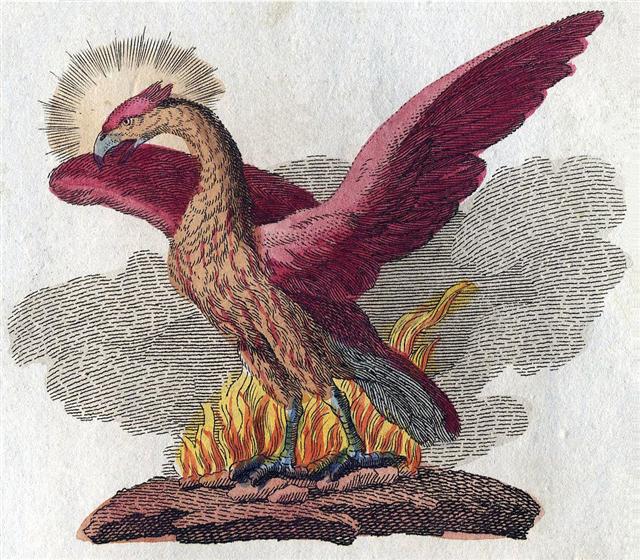 |
|
VISIBLE CLOSE TO
THE FULL MOON: |
|
CHANG SHA (Long
Sand-bank) =
ζ
Corvi
(186.3) |
INTROMETIDA (Inserted) =
ε
Crucis (187.4),
ACRUX =
α
Crucis
(187.5)
*146.0 = *187.4 - *41.4 |
γ Com. Berenicis (188.0),
σ
Centauri (188.1),
ALGORAB =
δ
Corvi
(188.5),
GACRUX =
γ
Crucis
(188.7) |
γ
Muscae (189.0),
AVIS SATYRA (Bird of the Satyrs) =
η
Corvi
(189.3),
ASTERION (Starry) =
β
Canum Ven.
(189.5),
KRAZ = β Corvi,
κ Draconis (189.7) |
|
Sept 23 (266) |
24 (85 + 182) |
25 (*188) |
26 |

... After the great flood had at long last
receded, Raven had gorged himself on the delicacies left by the
receding water, so for once, perhaps the first time in his life,
he wasn't hungry. But his other appetites, his curiosity and the
unquenchable itch to meddle and provoke things, to play tricks
on the world and its creatures, these remained unsatisfied.
Raven gazed up and down the beach. It was
pretty, but lifeless. There was no one about to upset, or play
tricks upon. Raven sighed. He crossed his wings behind him and
strutted up and down the sand, his shiny head cocked, his sharp
eyes and ears alert for any unusual sight or sound. The
mountains and the sea, the sky now ablaze with the sun by day
and the moon and stars he had placed there, it was all pretty,
but lifeless. Finally Raven cried out to the empty sky with a
loud exasperated cry. And before the echoes of his cry faded
from the shore, he heard a muffled squeak. He looked up and down
the beach for its source and saw nothing. He strutted back and
and forth, once, twice, three times and still saw nothing. Then
he spied a flash of white in the sand. There, half buried in the
sand was a giant clamshell. As his shadow fell upon it, he heard
another muffled squeak. Peering down into the opening between
the halves of the shell, he saw it was full of tiny creatures,
cowering in fear at his shadow. Raven was delighted. Here was a
break in the monotony of the day. But how was he to get the
creatures to come out of their shell and play with him? Nothing
would happen as long as they stayed inside the giant clamshell
... |
We might guess the Long Sand-bank could have been regarded as a place
opposite to where the Long Pit people (Rua-roa)
lived (i.e. the winter solstice).
... The Maori used the same word for both solstices,
marua-roa, 'long pit', and applied the term also to the
month or season during which the Sun passed through its most
northerly or southerly declination. A qualifying word such
as takurua, 'winter', or o-rongo-nui,
'summer', was usually appended to denote which solstice was
meant. When no explanatory word was added marua-roa
seems to have signified the winter solstice ...
However, we should rather think of the Long Sand-bank as the
September equinox in contrast to the June solstice.
South of the equator the winter solstice occurred in June
and therefore the Long Sand-bank should indicate the spring
equinox in September.
|
He Maro 2 |
3 (153 = 80 + 73) |
4 |
5 |
 |
 |
 |
 |
|
Eb5-25 (326 + 174 = 500) |
→ 3-25 + 1 + 2
months |
Eb5-27 |
Eb5-28 (354 / 2)
|
|
e tamaiti |
nuku maro etoru |
kua puoko i te haú ia |
te henua - te kiore |
|
Tama. 1. Shoot (of plant), tama miro,
tree shoot; tama tôa, shoot of sugarcane.
2. Poles, sticks, rods of a frame. 3. Sun rays. 4.
Group of people travelling in formation. 5. To
listen attentively (with ear, tariga, as
subject, e.g. he tama te tariga); e-tama
rivariva tokorua tariga ki taaku kî, listen
carefully to my words. Tamahahine, female.
Tamahine (= tamahahine), female, when
speaking of chickens: moa tamahine, hen.
Tamâroa, male. Vanaga. 1. Child. P Pau.: tama
riki, child. Mgv.: tama, son, daughter,
applied at any age. Mq.: tama, son, child,
young of animals. Ta.: tama, child.
Tamaahine (tama 1 - ahine),
daughter, female. Tamaiti, child P Mq.:
temeiti, temeii, young person. Ta.:
tamaiti, child. Tamaroa, boy, male. P
Mgv.: tamaroa, boy, man, male. Mq.: tamaóa,
boy. Ta.: tamaroa, id. 2. To align.
Churchill. In the Polynesian this [tama na,
father in the Efaté language] is distinguished from
táma child by the accent tamā
or by the addition of a final syllable which
automatically secures the same incidence of the
accent, tamái,
tamana
... Churchill 2
|
He Maro 1 |
*1 |
He Maro 3 |
*1 |
He Maro 5 |
 |
 |
 |
|
ANDROMEDA GALAXY (M31) |
ξ Phoenicis (9.0) |
π¹ Orionis (73.0)
|
HAEDUS II |
|
March 28 |
March 30 |
MARCH 30 |
Eb5-28
(354 / 2) |
|
te kiore - te henua |
nuku maro etoru |
te henua - te kiore |
|
*5
...
Nut,
whom the Greeks sometimes identified with
Rhea, was goddess of the sky, but it was
debatable if in historical times she was the
object of a genuine cult. She was Geb's twin
sister and, it was said, married him
secretly and against the will of Ra.
Angered, Ra had the couple brutally
separated by Shu and afterwards decreed that
Nut could not bear a child in any given
month of any year. Thoth, Plutarch tells us,
happily had pity on her. Playing draughts
with the Moon, he won in the course of
several games a seventy-second part of the
Moon's light with which he composed five new
days. As these
five intercalated days did not belong to the
official Egyptian calendar of three hundred
and sixty days, Nut was thus able to give
birth successively to five children: Osiris,
Haroeris (Horus), Set, Isis and Nepthys ...
.jpg) |
Perhaps nuku maro etoru
should be read as the 3rd in the timespace piece of
land named 'June'. We could then count June 3 (153)
- 89 (March 30) = 64. Since the time of the Golden
Bull the stars had been carried ahead in the Sun
calendar with 64 right ascension days. One of the
possible meanings of nuku is land: Mgv.:
nuku, land, country, place. Sa.: nu'u,
district, territory, island. Churchill. |
|
THE SUN: |
|
March 29 (88 = 84
+ 4) |
30 (365 + 89 =
454) |
31 |
April 1 (91 = 456
- 365) |
|
ε Andromedae (8.2),
DELTA = δ Andromedae (8.4), SCHEDIR (Breast) = α
Cassiopeiae
(8.6), ζ Andromedae, μ Phoenicis (8.9)
*8.4 - *41.4 = *149.0 - 182.0 =
- *33.0 |
ξ
Phoenicis (9.0),
ρ
Tucanae (9.1),
DENEB KAITOS (Tail of the Sea Beast) = β Ceti, η
Phoenicis (9.4),
AL NITHĀM (String of Pearls) =
φ¹
Ceti
(9.6)
*9.4 - *41.4 = *150.0 - 182.0 =
- *32.0 |
ACHIRD (Woman with Luminous Rays) =
η
Cassiopeiae
(10.7) |
Legs-15 (Wolf)
ν
Andromedae (11.0), φ² Ceti (11.1),
ρ Phoenicis (11.2),
η
Andromedae (11.4)
*335.0 = *11.4 - *41.4 |
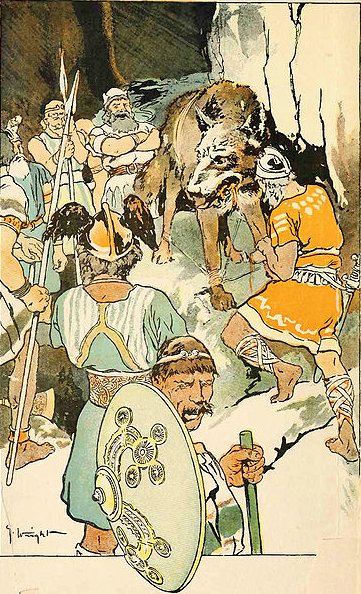
... At the
beginning of 44 B.C. - when Ceasar was still alive -
the Senate decided to raise statues of him in all
the temples and to sacrifice to him on his birthday
in the month Quintilis, which in honour of
him was renamed July. He was raised to the status of
a god (among the other gods of the state) under the
name Jupiter Julius. Marcus Antonius, who this year
was consul together with Ceasar, became high priest
and responsible for the ceremonies. In the middle of
February, at the time of the old feast of
Lupercalia, he ran around naked (except for a
girdle), and whipped the Roman ladies with thongs
made from goat-skin [februa], in order to
promote their fertility
...
The
word Lupercalia ís Latin and refers to an
ancient feast held in February 15. Lupus is
Latin for Wolf. The Chinese Legs station
which pointed at a Wolf happens to be number
15.

In order to be able to walk on dry
land it is necessary to have Legs. |
|
VISIBLE CLOSE TO
THE FULL MOON: |
|
α Muscae (190.2), τ Centauri (190.5), χ Virginis
(190.7)
ALDERAMIN (α Cephei) |
Al Áwwā'-11 (The Barker)
/
Shur-mahrū-shirū-18 (Front or
West Shur)
SOMBRERO GALAXY = M104 Virginis
(191.1),
ρ
Virginis (191.4), PORRIMA
=
γ
Virginis,
γ
Centauri (191.5)
*150.0 = *191.4 - *41.4 |
ι Crucis (192.2), β Muscae (192.5),
MIMOSA = β Crucis
(192.9) |
No star listed (193) |

Wolves do not bark, but dogs do.
|
|
Sept 27 (270 =
266 + 4) |
28 |
29 |
30 (3 * 91 = 273) |
By using our E chart we can quickly establish heliacal
Antares should be at Eb7-13 (559 = 496 + 63 = 326 + 233).
|
a1 |
32 |
32 |
b1 |
42 |
368 |
|
a2 |
33 |
65 |
b2 |
27 |
395 |
|
a3 |
35 |
100 |
b3 |
16 |
411 |
|
22 |
433 |
|
a4 |
36 |
136 |
b4 |
42 |
475 |
|
a5 |
42 |
178 |
b5 |
35 |
326 + 184 = 510 |
|
a6 |
39 |
217 |
b6 |
36 |
118 |
546 |
|
a7 |
39 |
256 |
b7 |
42 |
588 |
|
a8 |
4 |
260 |
b8 |
40 |
314 * 2 = 628 |
|
9 * 29 |
|
30 |
290 |
|
a9 |
36 |
326 |
sum total |
260 * 2 + 108
260 + 368 = 314 * 2 |
| sum |
260 + 66 |
|
2 * 314 - 510 = 118 = 4 lunar
synodic months |
However, I cannot perceive any sign of Antares at or close to Eb7-13.
Instead I find what looks like Aldebaran 14 days later:
|
 |
*45.7 |
 |
|
Aug 22 (234) |
Oct 7 (280) |
|
ADHAFERA
(*154.7) |
σ
Virginis (*200.4) |
 |
48 |
 |
13 |
 |
|
Eb5-35 (280 +
230) |
Eb7-13 (559) |
Eb7-27 (573) |
|
*65 |
*114 |
*128 |
|
Kua pipiri te hetu |
Erua oona mea ki te puoko |
te vaha |
|
May 25 (145) |
July 13 (194) |
July 27 (208 =
343 - 135) |
|
Oct 7 (280 = 145 + 135) |
Nov 25 (194 + 135 = 329) |
Dec 9 (208 + 135
= 7 * 7 * 7) |
October 7 (280) + 230 = 510 = 365 + 145 (= 5 * 29) and 145 -
80 = *65.
559 (Eb7-13) = 365 + 194 and 194 - 80 = *114.
573 (Eb7-27) = 365 + 208 and 208 - 80 = *128 = *64 + *64.
 |
 |
 |
 |
|
Eb5-35 (326 + 184
= 510) |
Eb6-1 (60 + 5 * 5
* 5) |
Eb6-2 (193 - 7) |
Eb6-3 (513 → 19 *
27) |
|
Kua pipiri te hetu |
ko te mata no te henua |
to ihe - te maro |
tara |
|
Piri. 1. To join (vi, vt); to meet
someone on the road; piriga, meeting,
gathering. 2. To choke: he-piri te gao. 3.
Ka-piri, ka piri, exclamation: 'So many!'
Ka-piri, kapiri te pipi, so many shellfish! Also
used to welcome visitors: ka-piri, ka-piri!
4. Ai-ka-piri ta'a me'e ma'a, expression used
to someone from whom one hopes to receive some news,
like saying 'let's hear what news you bring'. 5.
Kai piri, kai piri, exclamation expressing:
'such a thing had never happened to me before'.
Kai piri, kai piri, ia anirá i-piri-mai-ai te me'e
rakerake, such a bad thing had never happened to
me before! Piripiri, a slug found on the
coast, blackish, which secretes a sticky liquid.
Piriu, a tattoo made on the back of the hand.
Vanaga. 1. With, and. 2. A shock, blow. 3. To stick
close to, to apply oneself, starch; pipiri,
to stick, glue, gum; hakapiri, plaster, to
solder; hakapipiri, to glue, to gum, to coat,
to fasten with a seal; hakapipirihaga, glue.
4. To frequent, to join, to meet, to interview, to
contribute, to unite, to be associated, neighboring;
piri mai, to come, to assemble, a company, in
a body, two together, in mass, indistinctly; piri
ohorua, a couple; piri putuputu, to
frequent; piri mai piri atu, sodomy; piri
iho, to be addicted to; pipiri, to catch;
hakapiri, to join together, aggregate,
adjust, apply, associate, equalize, graft, vise,
join, league, patch, unite. Piria; tagata
piria, traitor. Piriaro (piri 3 -
aro), singlet, undershirt. Pirihaga,
to ally, affinity, league. Piripou (piri
3 - pou), trousers. Piriukona,
tattooing on the hands. Churchill.
.jpg)
Tara. 1. Thorn: tara miro. 2.
Spur: tara moa. 3. Corner; te tara o te
hare, corner of house; tara o te ahu,
corner of ahu. Vanaga. (1. Dollar; moni
tara, id.) 2. Thorn, spike, horn; taratara,
prickly, rough, full of rocks. P Pau.: taratara,
a ray, a beam; tare, a spine, a thorn. Mgv.:
tara, spine, thorn, horn, crest, fishbone.
Mq.: taá, spine, needle, thorn, sharp point,
dart, harpoon; taa, the corner of a house,
angle. Ta.: tara, spine, horn, spur, the
corner of a house, angle. Sa.: tala, the
round end of a house. Ma.: tara, the side
wall of a house. 3. To announce, to proclaim, to
promulgate, to call, to slander; tatara, to
make a genealogy. P Pau.: fakatara, to
enjoin. Mq.: taá, to cry, to call. 4. Mgv.:
tara, a species of banana. Mq.: taa, a
plant, a bird. Ma.: tara, a bird. 5. Ta.:
tara, enchantment. Ma.: tara, an
incantation. 6. Ta.: tara, to untie. Sa.:
tala, id. Ha.: kala, id. Churchill |
|
Oct 7 (280) |
8 |
9 (100 + 182) |
10 |
...Possibly Eb5-35
was designed to visualize how the
Sun at the horizon would be seen
reflected as in a mirror by the
surface of the water. We can compare
with Ba7-12:
|
 |
*45.7 |
 |
|
Aug 22 (234) |
Oct 7 (280) |
|
ADHAFERA
(*154.7) |
σ Virginis (*200.4) |
|
|
No star listed (18) |
ADHIL
(Garment's Train) = ξ Andromedae
(19.3),
θ
Ceti (19.7) |
KSORA (Knee) = δ Cassiopeiae
(20.1), ω Andromedae (20.6), γ Phoenicis (20.8) |
δ Phoenicis (21.5) |
|
April 8 (108) |
9 |
10 (100) |
11 (365 + 101 = 466) |
|
... It is known
that in the final battle of the gods, the massed
legions on the side of 'order' are the dead
warriors, the 'Einherier' who once fell in combat on
earth and who have been transferred by the Valkyries
to reside with Odin in Valhalla - a theme much
rehearsed in heroic poetry. On the last day, they
issue forth to battle in martial array. Says
Grimnismal (23): 'Five hundred gates and forty
more - are in the mighty building of Walhalla -
eight hundred 'Einherier' come out of each one gate
- on the time they go out on defence against the
Wolf.' That makes 432,000 in all, a number of
significance from of old. This number must have had
a very ancient meaning, for it is also the number of
syllables in the Rigveda. But it goes back to
the basic figure 10,800, the number of stanzas in
the Rigveda (40 syllables to a stanza) [40 *
270 = 10800] which, together with 108, occurs
insistently in Indian tradition, 10,800 is also the
number which has been given by Heraclitus for the
duration of the Aiōn, according to Censorinus (De
die natali, 18), whereas Berossos made the
Babylonian Great Year to last 432,000 years. Again,
10,800 is the number of bricks of the Indian
fire-altar (Agnicayana) ... |
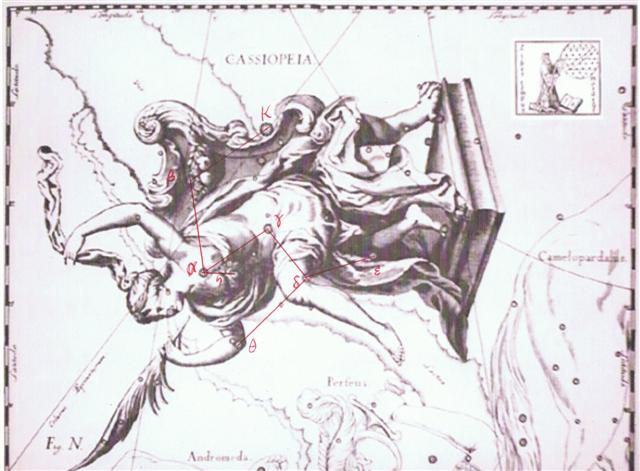 |
Metoro told us that Eb5-35 and Eb7-13 were special by
way of his Capital letters. Looking to see where he used
Capital letters it is first quite clear that on side a
of the tablet he used such
at the
beginning of the glyph lines - excepting at the
beginning of the last line.
In addition we can find some more places
(not counting those where he said Rei, Rapa
or Ao),
9 of them are on side b and 2 on side a:
 |
 |
 |
 |
|
 |
|
Ea2-22 |
Ea5-31 |
Ea9-1 |
Ea9-7 |
Eb1-1 |
|
ma te hokohuki - E te
moa e |
Te mauga |
kava |
kua mau ko te Rapa |
tagata mau kupega |
|
 |
 |
 |
 |
 |
 |
|
Eb1-36 |
Eb3-26 |
Eb3-38 |
Eb4-42 |
Eb5-10 |
Eb5-20 |
|
Kua vare |
tagata - e Tapamea |
Te maitaki |
E manu |
kua tu te Ao |
te henua - Te kiore |
|
 |
 |
 |
 |
|
Eb5-35 |
Eb6-36 |
Eb7-13 |
Eb8-40 |
|
Kua pipiri te hetu |
kua vere te rima -
Te henua |
Erua oona mea ki te puoko |
Mamae mamae hia |
Notably he did not use a capital letter at Eb1-1 and neither
at any other of
the beginnings of the glyph lines on side b.
There is much food for thought here. Just let me add an
idea: At Eb5-35 they are 'glued together', in other words they
are in 'close embrace' (before the Raven would make them come
out).
... They were Ranginui, the Sky
Father, and Papatuanuku, the Earth Mother, both
sealed together in a close embrace. Crushed between the
weight of their bodies were their many children, whose
oppression deepened. They yearned to be free; they fought
their parents and each other to break loose. Tuumatauenga,
virile god of war, thrust and shouted; Tangaroa of
the oceans whirled and surged; Tawhirirangimaatea,
Haumiatiketike and Rongomatane, of wild foods and
cultivated crops, tried their best but were not successful;
and Ruamoko, god of earthquakes, yet to be born,
struggled in the confinement of his mother's womb ... Of
them all, Taane Mahuta, the god of the forests, was
the most determined; he set his sturdy feet upon his
father's chest, and braced his upper back and shoulders
against the bosom of his mother. He pushed; and they parted.
So the world, as the Maori understand it, came into being
...
... They were not going to come out as
long as they were so afraid of him. So Raven leaned over his
head, close to the shell, and with all the cunning and skill
of that smooth trickster's tongue, that had so often gotten
him in and out of so many misadventures during his troubled
and troublesome existence, he coaxed and cajoled and coerced
the little creatures to come out and play in his wonderful
shiny new world. As you know the
Raven has two voices, one harsh and strident, and the other
which he used now, a seductive, bell-like croon which seems
to come from the depth of the sea, or out of the cave where
winds are born. It is an irresistable sound, one of the
loveliest in the world. It wasn't long before first one and
then another of the little shell-dwellers emerged from the
shell. Some scurried back when they saw the Raven, but
eventually curiosity overcame their caution and all of them
had crept or scrambled out. Very strange creatures they
were: two legged like Raven, but otherwise very different.
They had no feathers. Nor fur. They had no great beak. Their
skin was pale, and they were naked except for the dark hair
upon round, flat-featured heads. Instead of strong wings
like raven, they had thick stick-like arms that waved and
fluttered constantly. They were the first humans ...
At Eb7-13 they are outside and possibly indicating where the
Weaving of the cosmic net was beginning, i.e. the
right ascension strings and the declination thongs 90º
apart. Although this was not how the ancient Egyptians saw
it, for they evidently used another perspective, presumably
because they had the pair of Bull horn points in mind (El-nath
and the Heavenly Gate).
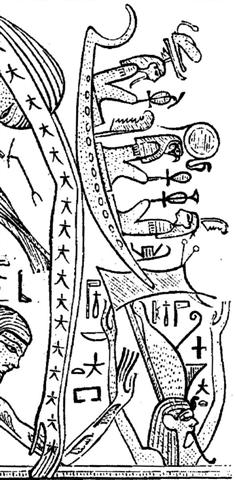
|
















.jpg)


.jpg)




